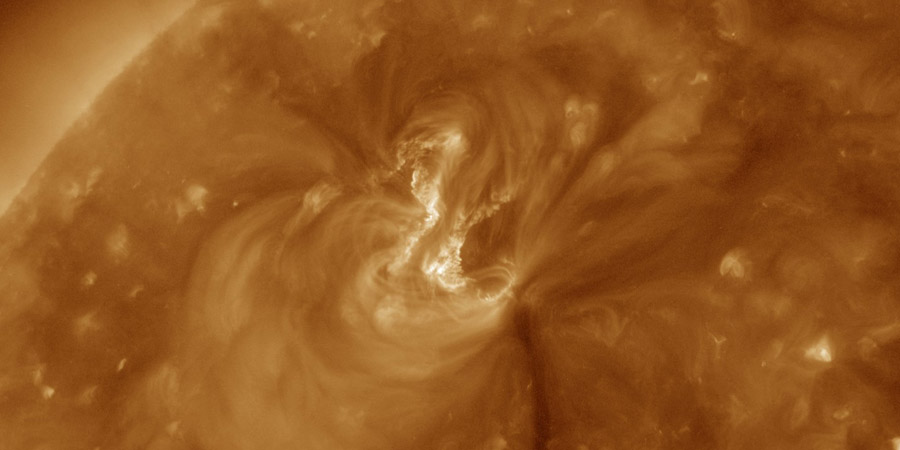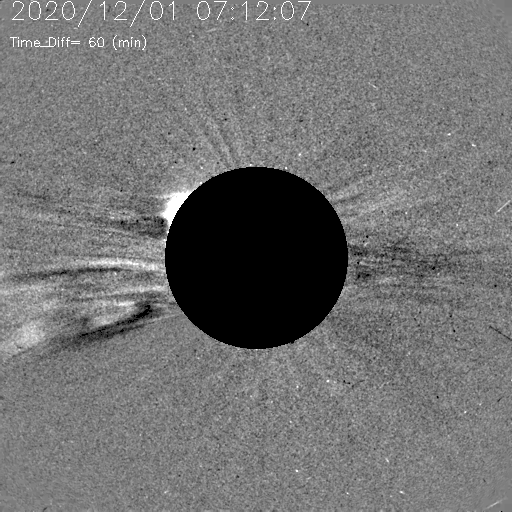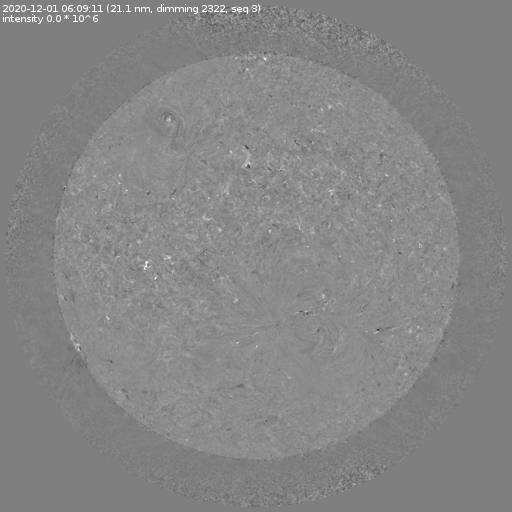C1 solar flare and CME, glancing blow possible
Tuesday, 1 December 2020 19:11 UTC

A C1.2 solar flare took place today at 07:21 UTC and came from a sunspot region on the Sun's northern hemisphere. Sunspot region 2787 was to blame. While the solar flare wasn't that strong, it was eruptive and that's what counts! Associated with the solar flare were a coronal wave and coronal dimming.
A coronal mass ejection (cloud of solar plasma ejected by the Sun) became visible on both STEREO and SOHO coronagraph imagery. We focus our attention on the imagery coming from SOHO which is a space craft that looks at coronal mass ejections (CMEs) from Earth's point of view. Surprisingly, we see a partial halo coronal mass ejection with the bulk of the coronal mass ejection heading well north-east of us but there are faint shock signatures to be found expanding to the north, west and partially south of the coronagraph. This could mean that this coronal mass ejection has a chance to deliver a glancing blow to our magnetosphere. It is not the fastest coronal mass ejection ever recorded as you might expect from a C1 solar flare and the cloud of solar plasma shouldn't cause a major impact here at Earth but nonetheless something to watch out for as we are moderately confident that we could see a shock signature passing DSCOVR and our planet. With a travel time of around three days we conclude that a minor CME impact can not be ruled out this Friday which would be 4 December. High latitude sky watchers should be alert around that date for possible enhanced auroral displays.


Thank you for reading this article! Did you have any trouble with the technical terms used in this article? Our help section is the place to be where you can find in-depth articles, a FAQ and a list with common abbreviations. Still puzzled? Just post on our forum where we will help you the best we can!
Latest news
Latest forum messages
More topicsSupport SpaceWeatherLive.com!
A lot of people come to SpaceWeatherLive to follow the Sun's activity or if there is aurora to be seen, but with more traffic comes higher server costs. Consider a donation if you enjoy SpaceWeatherLive so we can keep the website online!

Space weather facts
| Last X-flare | 2024/05/15 | X2.9 |
| Last M-flare | 2024/05/16 | M1.0 |
| Last geomagnetic storm | 2024/05/13 | Kp6 (G2) |
| Spotless days | |
|---|---|
| Last spotless day | 2022/06/08 |
| Monthly mean Sunspot Number | |
|---|---|
| April 2024 | 136.5 +31.6 |
| May 2024 | 153.1 +16.6 |
| Last 30 days | 175.9 +69.7 |


